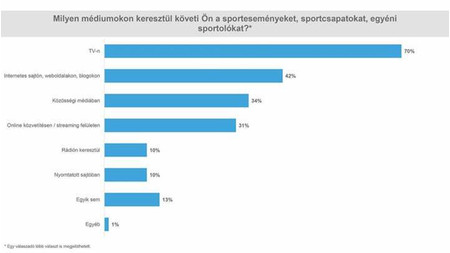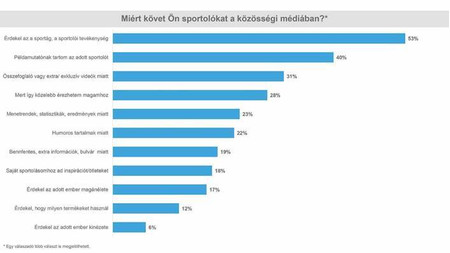The record shows the power of rooting
Telenor has prepared for this summer large-scale sports events with a community record attempt. Creating Hungary’s longest fan scarf, it aimed to bring Hungarians together through the power of rooting. In response to the announcement, 1,787 fans submitted messages supporting the Hungarian team. Each message was added to the knitted scarf as a 1-meter section adding up to a record-breaking length of 1,787 meters in total.
It is also the first Hungarian sports relic setting a formal world record related to rooting and it is also Hungary’s longest scarf ever. Fan messages were contributed from 500 towns and villages across the country. Nearly half of them arrived from Budapest followed by county seats including Szeged, Debrecen and Miskolc.
Rooting in the online space
As shown by the new Hungarian record, rooting together has a strong cohesive force. In its recent survey, Telenor* explored the online rooting habits of Hungary’s adult internet users. Based on the results, Hungarians respond mostly to global events that engage even those who don’t usually watch any sports. Nearly half of all respondents (49%) said that they don’t watch sports regularly but three out of four (73%) follow global events and 44% continental events. Dr. Ádám Guld, media researcher and communication expert, believes that besides the universal availability of such content, reasons include “the strong cohesive force of highly visible athletes creating fan communities across national and even continental borders in the global media space”.
Not surprisingly, sports events are usually followed by men, and television is still the most popular platform used for this purpose (70% of respondents marked this platform). Nevertheless, the importance of the online space is also obvious. 42% of respondents follow their favourite sports in the online media, on websites and blogs, while 34% do so in social media. 31% (typically those in the 18 to 35 age group) also join online events and use streaming platforms.
More than half of those participating in the survey follow athletes’ online profile, because they are interested in the given sports and the sports achievements of the given person (53%), others are attracted by their exemplary behaviour, personality or activities (40%). A gender-specific difference is that men are more interested in schedules, statistics and results than women (26% vs 17%). Women, on the other hand, are more interested in the private lives of athletes than men (22% vs 14%).
“Opinion leaders with an athlete background active on online platforms can attract and maintain the attention of huge masses. This can be only partly explained by the actual sports performance of those individuals. Especially with female consumers, this has more to do with the athlete’s personality, appearance, lifestyle, private life, as well as the brands and products promoted by them. In this regard, ‘ordinariness’ is a key concept which means that consumers would like to gain insight into the everyday lives of celebrities”, added dr. Ádám Guld.
Telenor’s survey revealed that respondents are usually passive in their sports-related social media activities. 48% are mostly observers on sports sites. They read the news, view the photos, but few of them comment (10%) or share (5%) content. According to dr. Ádám Guld: “These results are in line with international trends. The ratios are close to the ‘1-9-90’ rule of social media with 1% of users creating original content, 9% reinforcing this content, and 90% following events passively.”
Once the record is verified, the record-breaking scarf made of 350 kg of yarn will fill its original purpose. It will be cut into pieces and every contributor will get the piece displaying their message so that they can use it when cheering for the Hungarian team during the summer. In addition, the scarf is also used in a spectacular installation on display at the Nyugati entrance of shopping mall Westend in Budapest until 24 June.
Video about creating the fan scarf: https://youtu.be/pvE_26lkZY4
* A survey conducted on the platform of Ipsos Instant Research between 28 May and 2 June 2021 on a sample of 840 internet users aged 18 to 65, representative of Hungary’s population in terms of region and type of settlement.


